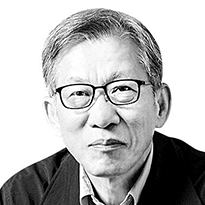A country with proud World Heritage

Yoo Hong-joon
The author, a chair professor of art history at Myongji University, is a columnist for the JoongAng Ilbo.
Unesco World Heritage began when several countries worked together to move the Abu Simbel temple after it was submerged due to the construction of the Aswan Dam in Egypt. After recognizing that cultural heritage is a common asset of humanity, the Convention concerning the Protection of the World Cultural and Natural Heritage was unanimously passed at the 17th Unesco General Assembly in 1972. Currently, Korea has 14 cultural heritage sites and two natural heritage sites. Including two more in North Korea — the “Complex of Koguryo Tombs” and the historic monuments and sites in Kaesong — Korea ranks 18th.
Unesco has a separate list called the Memory of World Register. Korea has the most entries in Asia — and ranks fifth in the world — with 18 cases, including the Hunminjeongeum Haeryebon, an introduction to the Korean alphabet. Korea ranks fourth on Unesco’s Intangible Cultural Heritage List, with 22 cases including royal ancestral rites at Jongmyo and Jongmyo Jeryeak, the music used for the rite.
To become a cultural heritage site, it is necessary to get international recognition beyond borders for “outstanding universal value” — and the process of registration has served as a chance to view Korea’s heritage in a global perspective. One such value is based on the concept of “serial cultural heritage.” Though the sites are geographically apart, they have a uniform character, as exemplified by royal tombs of Joseon Dynasty. Sansa, or mountain temples, seowon, or neo-Confucian academies of the Joseon dynasty, dolmens, and the Gaya Tumuli — which was registered in September 2023 — were designated as serial cultural heritage.
The International Council on Monuments and Sites (Icomos), a Unesco-affiliated deliberative body, evaluated the Gaya Tumuli and defined them as “serial heritage,” as they showed a confederation of small states in the southern part of the Korean Peninsula maintaining an autonomous and horizontal system while coexisting with neighbors and displaying the diversity of ancient civilizations in East Asia.
Sansa, registered in 2018, are uniquely Korean temples where a prayer hall and monastery coexist. It is hard to find Buddhist temples in India, Tibet, China and Japan that match the natural environment as well as Korean temples do mountains. The official name registered with Unesco is “Sansa-Buddhist Mountain Monasteries in Korea.”
As of now, Korea has placed 14 sites on the provisional list of World Heritage Sites before their official registration. The fortresses in the central region are being pushed as serial heritage. The fortresses from the Three Kingdoms period — such as Three Years Fortress in Boeun County, North Chungcheong and Ondal Fortress in Danyang, North Chungcheong — rely on the unique natural topography along a valley or over a mountain, unlike medieval European castles, Japan’s daimyo or China’s city fortresses.
Although they are not yet on the provisional list, pavilions across the country are also beautiful pieces of heritage created by the natural environment in Korea. You can always find a pavilion around the country, wherever scenery is beautiful or rest is needed. Pyongyang’s Bubyeokru; Jinju, South Gyeongsang’s Chokseokru; and Miryang, South Gyeongsang’s Yeongnamru have long been considered the three pavilions of Joseon. The pavilions have countless stories and tales, and many poets wrote about them. For example, Haryun, the prime minister during the reign of King Taejong, wrote on Hanbyeokru Pavilion, “Managing a pavilion is merely the last work for the village head, but who can say it is a small task when maintenance of the pavilion is an indicator of the administrative status of the village?”
As awareness of the pavilions spreads, Jukseoru in Samcheok, Gangwon and Yeongnamru in Miryang have been promoted from “treasure” to “national treasure.” I visited the latter to attend a funeral last month and stopped by the pavilion. The dignified structure, atop a hill along the river, deserves to be one of the top pavilions in Korea.
The historic sites must be prepared for Unesco review. Their surrounding environment should be refurbished, and academic conferences on architecture, literature and history should take place there. With thorough preparation, I expect to see them on the register within 10 years.
Translation by the Korea JoongAng Daily staff.










with the Korea JoongAng Daily
To write comments, please log in to one of the accounts.
Standards Board Policy (0/250자)